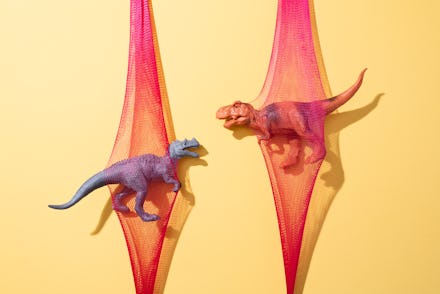New research suggests dinosaurs turned to cannibalism during desperate times

A study published last week in the journal Plos One has found evidence that dinosaurs of the Late Jurassic period likely resorted to cannibalism as resources grew scarce. According to the researchers, teeth and bite marks on bone fossils found in the Mygatt-Moore Quarry of Colorado suggest that theropods scavenged and fed on the carcasses of their own kind.
The study came about when the authors found a surprisingly large amount of fossils with bite marks in the quarry, which is part of the Morrison Formation, a stretch of land with rock layers well known to contain fossils from the Upper or Late Jurassic period. In the past, researchers mostly collected and examined only the best-preserved fossils, but this time they decided to test methods to figure out where the bites came from.
Bite marks can give hints that tell us how predators and prey interacted with each other, what type of competition was in the area, the amount of food available at the time, and much more. But theropod bites are hard to find on bones — some paleontologists theorize that the predators were clean eaters, neatly stripping only the meat from their prey, meaning any bite marks on bones were accidental. Mammals, on the other hand, tend to be sloppy eaters who grind on bones while taking their meat.
Adding to the researchers' difficult task was the tricky business of matching a bite mark to a predator. The authors of the study noted that research has "disproportionately overrepresented" tyrannosaur bite marks instead of focusing on identifying the bites of other species.
While the researchers couldn't match a predator to every mark they found, they still ended up hitting a bite mark jackpot of sorts. Out of the 2,368 vertebrate fossils they received, 684 had at least one theropod bite mark. Out of those, they were able to identify bites that could have come from two of the most common predators found at the site: Allosaurus and Ceratosaurus.
By measuring the marks and doing a bit of forensics with the fossils they had, they believe the bite marks suggested that the dinosaurs might have scavenged, rather than hunted, the carcasses of members of their own species when resources became scarce. The finding helps paleontologists paint a better picture of the environment the dinosaurs might have lived in.
And the excavation comes with an additional lesson for researchers as well.
"[We] paleontologists might have led ourselves astray a bit because of the way we collect fossils in the field," lead author Stephanie Drumheller-Horton told CNN. Old-school methods that led to the collection of only the 'best preserved' fossils to study might have made researchers miss out on marked up bones with a story to tell.
"If we're only collecting the nice stuff and we're leaving sort of the ugly, beat-up stuff out in the field, that's going to skew your idea of what the history of the fossils at that site actually was."
Drumheller-Horton hopes that the unusually large amount of bitten vertebrae will spur more researchers to collect more ugly fossils. Not only could it help future match-ups between bites and predators, but it could help shape what we know about the past.